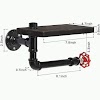There are multiple specific standards for different types of chairs. Dental chairs are specified by ISO 6875. Bean bag chairs are specified by ANSI standard ASTM F1912-98. ISO 7174 specifies stability of rocking and tilting chairs. ASTM F1858-98 specifies plastic lawn chairs. ASTM E1822-02b defines the combustibility of chairs when they are stacked.
The Business and Institutional Furniture Manufacturer’s Association (BIFMA) defines ANSI/BIFMA X5.1 (titled: General-Purpose Office Chairs – Tests) for testing of commercial-grade chairs. It specifies things like:
chair back strength of 150 pounds (68 kg)
chair stability if weight is transferred completely to the front or back legs
leg strength of 75 pounds (34 kg) applied one inch (25 mm) from the bottom of the leg
seat strength of 225 pounds (102 kg) dropped from six inches (150 mm) above the seat
seat cycle strength of 100,000 repetitions of 125 pounds (57 kg) dropped from 2 inches (50 mm) above the seat
The specification further defines heavier “proof” loads that chairs must withstand. Under these higher loads, the chair may be damaged, but it must not fail catastrophically.
chair stability if weight is transferred completely to the front or back legs
leg strength of 75 pounds (34 kg) applied one inch (25 mm) from the bottom of the leg
seat strength of 225 pounds (102 kg) dropped from six inches (150 mm) above the seat
seat cycle strength of 100,000 repetitions of 125 pounds (57 kg) dropped from 2 inches (50 mm) above the seat
The specification further defines heavier “proof” loads that chairs must withstand. Under these higher loads, the chair may be damaged, but it must not fail catastrophically.
Large institutions that make bulk purchases will reference these standards within their own even more detailed criteria for purchase.[37] Governments will often issue standards for purchases by government agencies (e.g. Canada’s Canadian General Standards Board CAN/CGSB 44.15M[38] on “Straight Stacking Chair, Steel” or CAN/CGSB 44.232-2002 on “Task Chairs for Office Work with Visual Display Terminal”).
Chairs may be rated by the length of time that they may be used comfortably – an 8-hour chair, a 24-hour chair, and so on. Such chairs are specified for tasks which require extended periods of sitting, such as for receptionists or supervisors of a control panel.









0 Comments